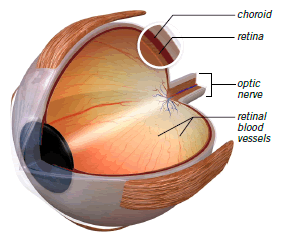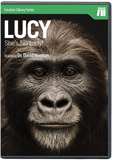
photo Steve Allen | ScienceSource.com
Retinal Blood Vessels—Hiding in Plain Sight
Experiment
The retinas of your eyes are made of living cells, which must be nourished by blood vessels. But with all this blood covering your eyes, how can you see?
We might think of the eye as God’s camera. If we compare the eyeball to a camera, the retina of the eye would correspond to the photographic film (or the light-sensitive CCD in a digital camera). But unlike film or a CCD, the retina is a living sheet of brain cells and fibers, about the thickness of a sheet of paper.
Since living cells need constant nourishment, the retina is supplied by a “sandwich” of blood vessels covering both its front and back surfaces (Figure 1). About 90–95% of the blood supply flows through choroid vessels behind the retina, outside of view, but about 5–10% of the blood supply flows through the retinal vessels in front of the retina (toward the lens and incoming light).
I’m Not Looking at You!
Everywhere we look, we must look through this network of blood vessels on the front of our retinas. Why then do we not notice these vessels in our field of view?
Research studies show that we perceive images only if they move on the surface of our retinas. A fixed image on the retina slowly disappears from the brain’s perception. As a result, we do not notice our retinal vessels because they are fixed to the surface of the retina and our brain simply ignores them.
So How Do We See All the Non-Moving Things Around Us?
If our brain is designed to ignore images that aren’t moving on our retinas, why can we see motionless objects in front of us, like a building? The reason is that the muscles of our eyes make small, rapid, involuntary movements so that everything in our visual field is in constant motion. These slight movements are unnoticeable but help the brain retain the image of any non-moving objects. The retinal blood vessels, of course, move with the eyeball and retina, so their image or shadow remains fixed and thus not noticed.
Answers Magazine
April – June 2015
The eruption of Mount Saint Helens in the 1980s changed how we view catastrophe; on its thirty-fifth anniversary, we examine what we’ve learned since then.
Browse Issue SubscribeRecommended Resources

Answers in Genesis is an apologetics ministry, dedicated to helping Christians defend their faith and proclaim the good news of Jesus Christ.
- Customer Service 800.778.3390
- © 2024 Answers in Genesis






